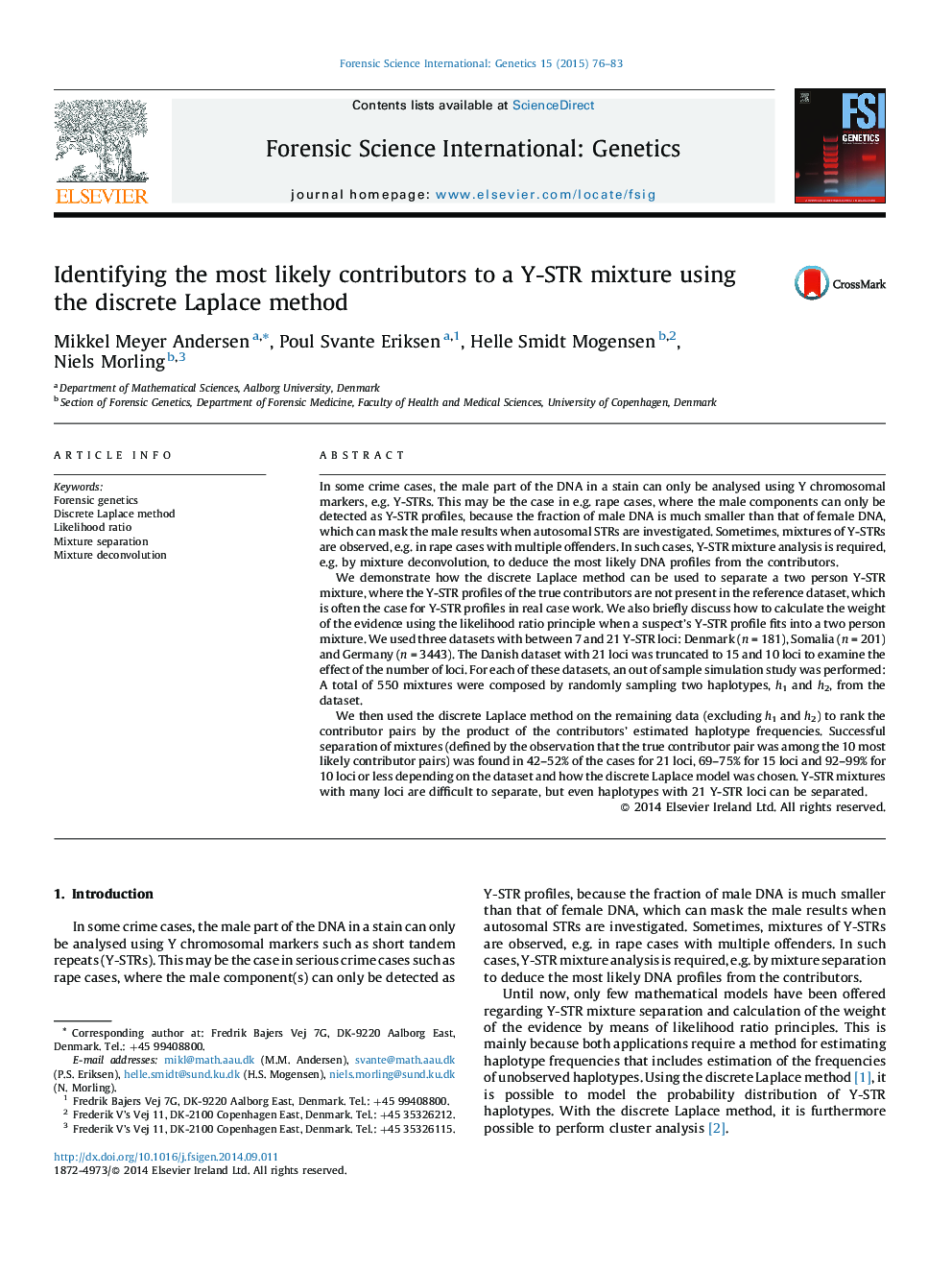| Article ID | Journal | Published Year | Pages | File Type |
|---|---|---|---|---|
| 6553848 | Forensic Science International: Genetics | 2015 | 8 Pages |
Abstract
We then used the discrete Laplace method on the remaining data (excluding h1 and h2) to rank the contributor pairs by the product of the contributors' estimated haplotype frequencies. Successful separation of mixtures (defined by the observation that the true contributor pair was among the 10 most likely contributor pairs) was found in 42-52% of the cases for 21 loci, 69-75% for 15 loci and 92-99% for 10 loci or less depending on the dataset and how the discrete Laplace model was chosen. Y-STR mixtures with many loci are difficult to separate, but even haplotypes with 21 Y-STR loci can be separated.
Keywords
Related Topics
Life Sciences
Biochemistry, Genetics and Molecular Biology
Genetics
Authors
Mikkel Meyer Andersen, Poul Svante Eriksen, Helle Smidt Mogensen, Niels Morling,
